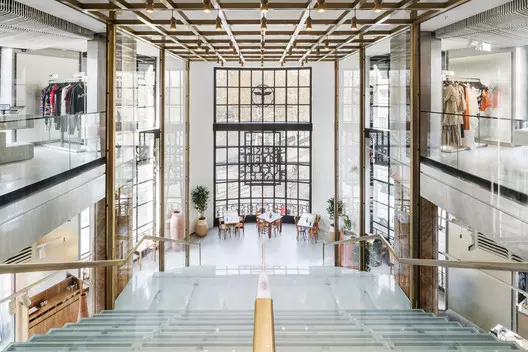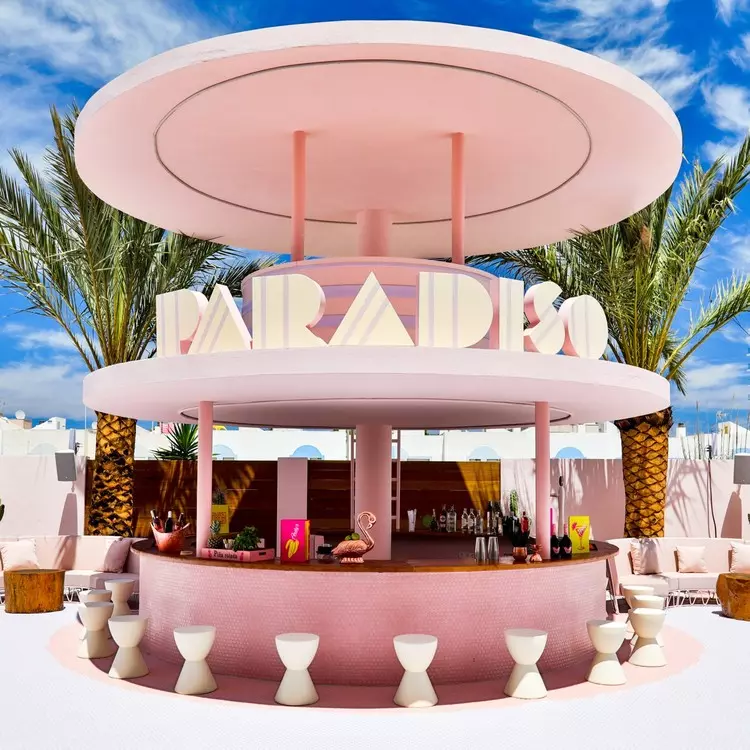 © Delfino Sisto Legnani and Marco Cappelletti
© Delfino Sisto Legnani and Marco Cappelletti
Almost a century after its iconic emergence, Art Deco is making a long-awaited comeback. From new projects to interior spaces and furniture around the world, the glitz and glam that defined the Roaring 20s in the early 20th century are now giving us a taste of the Roaring 20s revival in the 21st century. So, what can we expect from new Art Deco designs and the preservation of existing ones?
A Timeless Aesthetic
Art Deco, short for Arts Décoratifs, encompasses various design disciplines, but it is most strongly associated with bold geometric forms, rich materials, and a fusion of historic and futuristic elements. This aesthetic emerged from the International Exhibition of Modern Decorative and Industrial Arts held in Paris, quickly spreading its influence across the world. Iconic buildings like the Empire State Building in New York City, the UNESCO-protected Marine Drive in Mumbai, and the colorful rows of buildings in Miami showcase the enduring impact of Art Deco architecture and design.
 © Delfino Sisto Legnani and Marco Cappelletti
© Delfino Sisto Legnani and Marco Cappelletti
A Reflection of the Times
While the world has drastically changed over the past century, there are undeniable parallels between the socio-economic factors that led to the inception of Art Deco and the current era. In the 1920s, the United States faced challenges such as anti-immigrant sentiment and the aftermath of the Spanish Influenza pandemic. However, it was also a period of significant scientific and technological advancements. The golden sunbursts and vertical metallic lines against black backdrops symbolized progress and hope. Unlike earlier design movements that catered to the wealthy elite, Art Deco embraced cheaper materials and wider accessibility, thus gaining popularity among the masses. Today, as we yearn for a sense of timelessness and renewal, it's no wonder that Art Deco is once again captivating our imagination.
Preserving the Past, Embracing the Present
The revival of Art Deco is not limited to new designs but also includes the preservation and transformation of existing architectural gems. The Chrysler Building, one of the most iconic structures from the original Art Deco era, is currently undergoing interior renovations to restore its former glory and bring it into the present day. Similarly, in Paris, BIG has revitalized the iconic Galeries Lafayette, turning it into a curated retail laboratory for fashion, food, and lifestyle brands. Even major hotel chains, which once favored modernist finishes, are now seeking inspiration from Art Deco to create luxurious aesthetics.
 © Domaine Chandon
© Domaine Chandon
Looking Ahead
Art Deco represents a sense of hope and excitement. As we speculate on future design trends in 2022, perhaps we are no longer confined to debates about living in a Modernist or Post-Modernist era. Instead, we might find ourselves in an Art Deco era, where a deep understanding and appreciation for this influential movement are reshaping our perspectives on design.
 © Salem Mostefaoui
© Salem Mostefaoui
Editor's Note: This article was originally published on September 10, 2021.

















